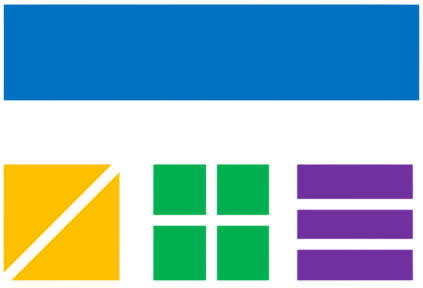Budget Calculator Information
Overview
Budget Calculator is a free, comprehensive tool that helps you create and analyze your monthly budget by tracking all your income and expenses. Enter your monthly income, categorize your expenses, and see your net income, savings rate, and budget health assessment. This calculator is ideal for anyone wanting to take control of their finances, reduce debt, increase savings, or simply understand where their money goes each month. By visualizing your spending patterns and financial health, you can make smarter financial decisions and achieve your financial goals.
What is a Budget?
A budget is a financial plan that tracks your income and expenses over a specific period (usually monthly). It helps you understand your spending patterns, identify areas for improvement, and achieve your financial goals. The basic formula is:
- Net Income = money left after expenses
- Total Income = all sources of income
- Total Expenses = all monthly expenses
A positive net income means you're living within your means, while a negative net income indicates you're spending more than you earn.
Budget Categories
Effective budgeting requires categorizing your income and expenses. Here are the main categories to consider:
Income Sources
- Salary and wages
- Side hustles and freelance work
- Rental income
- Investment dividends
- Other income sources
Expense Categories
- Housing (rent, utilities, insurance)
- Transportation (car payment, gas, insurance)
- Food (groceries, dining out)
- Healthcare (insurance, medical expenses)
- Debt payments (credit cards, loans)
- Savings and investments
- Personal and entertainment
- Other expenses
The 50/30/20 Budget Rule
Financial experts recommend the 50/30/20 rule as a guideline for budget allocation:
50% - Needs
Housing, utilities, food, transportation, healthcare, minimum debt payments
20% - Savings
Emergency fund, retirement, debt payoff, other financial goals
30% - Wants
Entertainment, dining out, shopping, hobbies, vacations
This is a guideline, not a strict rule. Adjust based on your income, location, and financial goals.
Budget Health Assessment
Our calculator provides a budget health assessment based on your financial situation:
- Excellent: Savings rate ≥ 20% with positive cash flow
- Good: Savings rate ≥ 10% with positive cash flow
- Fair: Positive cash flow but savings rate < 10%
- Needs Attention: Expenses exceed income
Budgeting Strategies
- Track Everything: Record all income and expenses for at least one month to understand your spending patterns.
- Use Realistic Estimates: Base your budget on actual spending, not ideal spending.
- Include Irregular Expenses: Divide annual expenses by 12 to include them in your monthly budget.
- Set Specific Goals: Define clear financial goals to motivate your budgeting efforts.
- Review Regularly: Check your budget monthly and adjust as needed.
- Automate Savings: Set up automatic transfers to savings accounts.
- Use Cash for Discretionary Spending: Helps control impulse purchases.
- Plan for Emergencies: Build an emergency fund before other savings goals.
Example Budget Breakdown
Here's an example of a well-balanced monthly budget for someone earning $5,500:
Monthly Income: $5,500
Total Expenses: $5,500\nNet Income: $0\nSavings Rate: 20%\nBudget Health: Excellent
Common Budgeting Mistakes
- Unrealistic Expectations: Setting budgets too low for essential categories.
- Forgetting Irregular Expenses: Not accounting for annual or quarterly expenses.
- No Emergency Fund: Not setting aside money for unexpected expenses.
- Ignoring Small Expenses: Small daily purchases can add up significantly.
- Not Adjusting: Failing to update the budget as circumstances change.
- No Financial Goals: Budgeting without clear objectives to work toward.
Budgeting Tools and Methods
There are several approaches to budgeting, each with its own advantages:
- Zero-Based Budgeting: Every dollar is assigned a purpose, leaving zero unallocated.
- Envelope Method: Use cash in envelopes for different spending categories.
- 50/30/20 Rule: Simple percentage-based allocation for needs, wants, and savings.
- Pay Yourself First: Save a portion of income before spending anything.
- Apps and Software: Use technology to track spending and automate budgeting.
Frequently Asked Questions (FAQ)
A: Review monthly to track progress and make adjustments. Quarterly reviews are good for long-term planning and goal assessment.
A: Focus on reducing expenses, especially discretionary spending. Look for ways to increase income through side hustles or career advancement. Consider debt consolidation for high-interest debt.
A: Yes, divide annual expenses by 12 to include them in your monthly budget. Examples include car insurance, property taxes, and annual subscriptions.
A: Aim for at least 10-20% of your income. Start with an emergency fund (3-6 months of expenses), then focus on retirement and other financial goals.
A: Needs are essential for survival and basic functioning (housing, food, healthcare, transportation). Wants are discretionary items that improve quality of life but aren't essential.
A: Base your budget on your lowest expected income. Use extra income for savings, debt payoff, or discretionary spending. Build a larger emergency fund for income stability.
